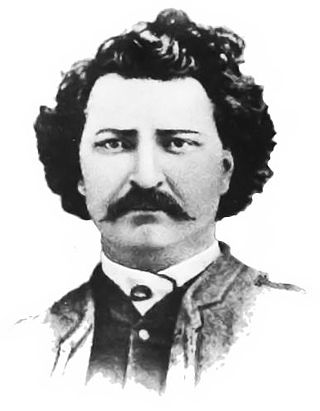
Louis Riel was a Canadian politician, a founder of the province of Manitoba, and a political leader of the Métis people. He led two resistance movements against the Government of Canada and its first prime minister John A. Macdonald. Riel sought to defend Métis rights and identity as the Northwest Territories came progressively under the Canadian sphere of influence.
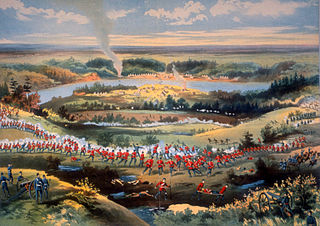
The North-West Rebellion, also known as the North-West Resistance, was an armed resistance movement by the Métis under Louis Riel and an associated uprising by Cree and Assiniboine of the District of Saskatchewan, North-West Territories, against the Canadian government. Many Métis felt that Canada was not protecting their rights, their land, and their survival as a distinct people. Fighting broke out in late March, and the conflict ended in June. About 91 people were killed in the fighting that occurred that spring before the conflict ended with the capture of Batoche in May 1885.

The Université de Saint-Boniface (USB) is a French-language public university located in the Saint Boniface neighbourhood of Winnipeg, Manitoba, Canada. An affiliated institution of the University of Manitoba, the university offers general and specialized university degree programs as well as technical and professional training. In 2014, 1,368 regular students were enrolled. Its Continuing Education Division, which includes a language school, has also counted over 4,200 enrolments.

St-Boniface is a city ward and neighbourhood in Winnipeg. Along with being the centre of the Franco-Manitoban community, it ranks as the largest francophone community in Western Canada.
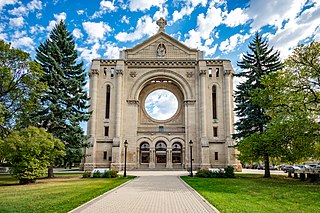
Saint Boniface Cathedral is a Roman Catholic cathedral of Saint Boniface, Winnipeg, Manitoba, Canada. It is an important building in Winnipeg, and is the principal church in the Roman Catholic Archdiocese of Saint Boniface, serving the eastern part of Manitoba province as well as the local Franco-Manitoban community. The church sits in the centre of the city at 190 avenue de la Cathédrale, Saint Boniface. Before the fire on July 22, 1968, which destroyed the previous building on site, the church was a minor basilica.

Louis Riel Sr. (père) was a farmer, miller, Métis leader, and the father of Louis Riel.
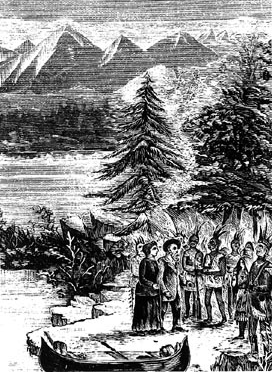
Marie-Anne Lagimodière was a French-Canadian woman noted as both the grandmother of Louis Riel, and as the first woman of European descent to travel to and settle in what is now Western Canada.

Jean-Baptiste Lagimodière was a French-Canadian trapper employed in the fur trade by the Hudson's Bay Company in Rupert's Land.

Jean-Baptiste Roger Joseph Camille Teillet was a Canadian politician, becoming the first self-identifying Métis member of the Canadian Cabinet in 1963.
St. Vital is a ward and neighbourhood of Winnipeg, Manitoba, Canada.

St. Norbert is a bilingual neighbourhood and the southernmost suburb of Winnipeg, Manitoba, Canada. While outside the Perimeter Highway, it is still part of the city. As of the 2016 Census, the population of St. Norbert is 5,850.

Lorette is a local urban district in the Rural Municipality of Taché, located 25 km southeast of Winnipeg, in the province of Manitoba, Canada.
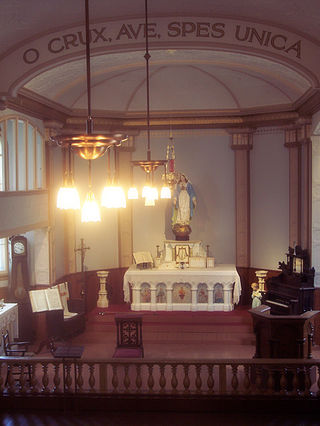
Le Musée de Saint-Boniface Museum is a museum in Winnipeg, Manitoba, Canada, that is dedicated to Franco-Manitoban and Métis culture and history.

Angus Augustin McKay was a Canadian politician who represented the Conservative Party in the riding of Marquette, Manitoba. He was elected on 2 March 1871 in a by-election. His term ended on 8 July 1872. He was the first aboriginal Canadian elected to the House of Commons of Canada.

Pierre Delorme was a Métis fur trader, businessman, farmer and political figure. He represented Provencher in the House of Commons of Canada during the 1st Canadian Parliament as a Conservative member from 1871 to 1872. He also represented St. Norbert South in the Legislative Assembly of Manitoba from 1870 to 1874 and St. Norbert from 1878 to 1879.
Elzéar Goulet was a Métis leader in the Red River Colony, which later became the province of Manitoba, Canada. He was a supporter of Louis Riel's provisional government and was murdered by Canadian troops under the command of Col. Garnet Wolseley, after the suppression of the Red River Resistance.
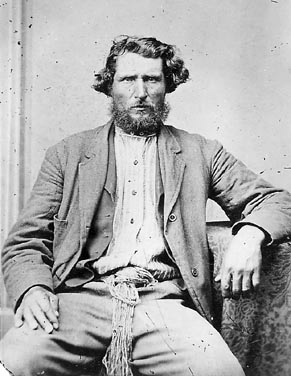
Ambroise-Dydime Lépine was a Métis politician, farmer, and military leader under the command of Louis Riel during the Red River Rebellion of 1869–1870. He was tried and sentenced to death for his role in the execution of Thomas Scott, but his sentence was commuted to five years exile by the Governor General of Canada.
Minnetonka is a neighbourhood in the city of Winnipeg, Manitoba, Canada, located in the southern section of the district of St. Vital. It is bounded by the Red River on the west and south, Abinojii Mikanah on the north, and St. Mary's Road on the east. As of the 2016 census, Minnetonka had a population of 4,285. On some maps, Minnetonka is called Riel.
Sara Riel was the first Métis Grey Nun from Red River. She is best known as the sister of Métis leader Louis Riel. Born in 1848 in the Red River settlement to parents Jean-Louis Riel and Julie Lagimodière, she was raised in a religious household. Where she was educated by Sisters of Charity of Montreal but also by her mother, who was dedicated to the Christian faith. She was inspired to become a nun after her brother Louis Riel entered the seminary to become a priest. Although Louis did not become a priest, Sara actively took her Solemn vows in 1868. She taught languages and arts at the Grey Nuns boarding schools between 1868 and 1871, after which she became a Catholic missionary. Her family were active members in the Red River community right up to the Métis resistance. Although separated from her family, her writings showed a sympathetic view towards the resistance. Given that her brother was leading the rebellion against the government, in 1869 the congregation feared for her safety and she was moved several times within a few years. Even though she took no active part in the rebellion, she provided support to her brother and acted on behalf of the Métis to local Catholic Churches. In 1871 she became the first Métis missionary from Red River and travelled to Île-à-la-Crosse in northern Saskatchewan. In 1872 Sara Riel was taken ill and almost died, after claiming a vision from God, Sara Riel changed her name to ‘Sister Marguerite-Marie of Alacoque’ and re-honoured her vows and commitment to the Catholic Church. She died of tuberculosis in 1884 at the age of 35.
Most of the following timelines for Manitoba's history is taken from either the Manitoba Historical Society, or from the Heritage Manitoba and the Gimli Municipal Heritage Advisory Committee, as adapted from a three-volume history of Manitoba published in 1993 titled Manitoba: 125.















